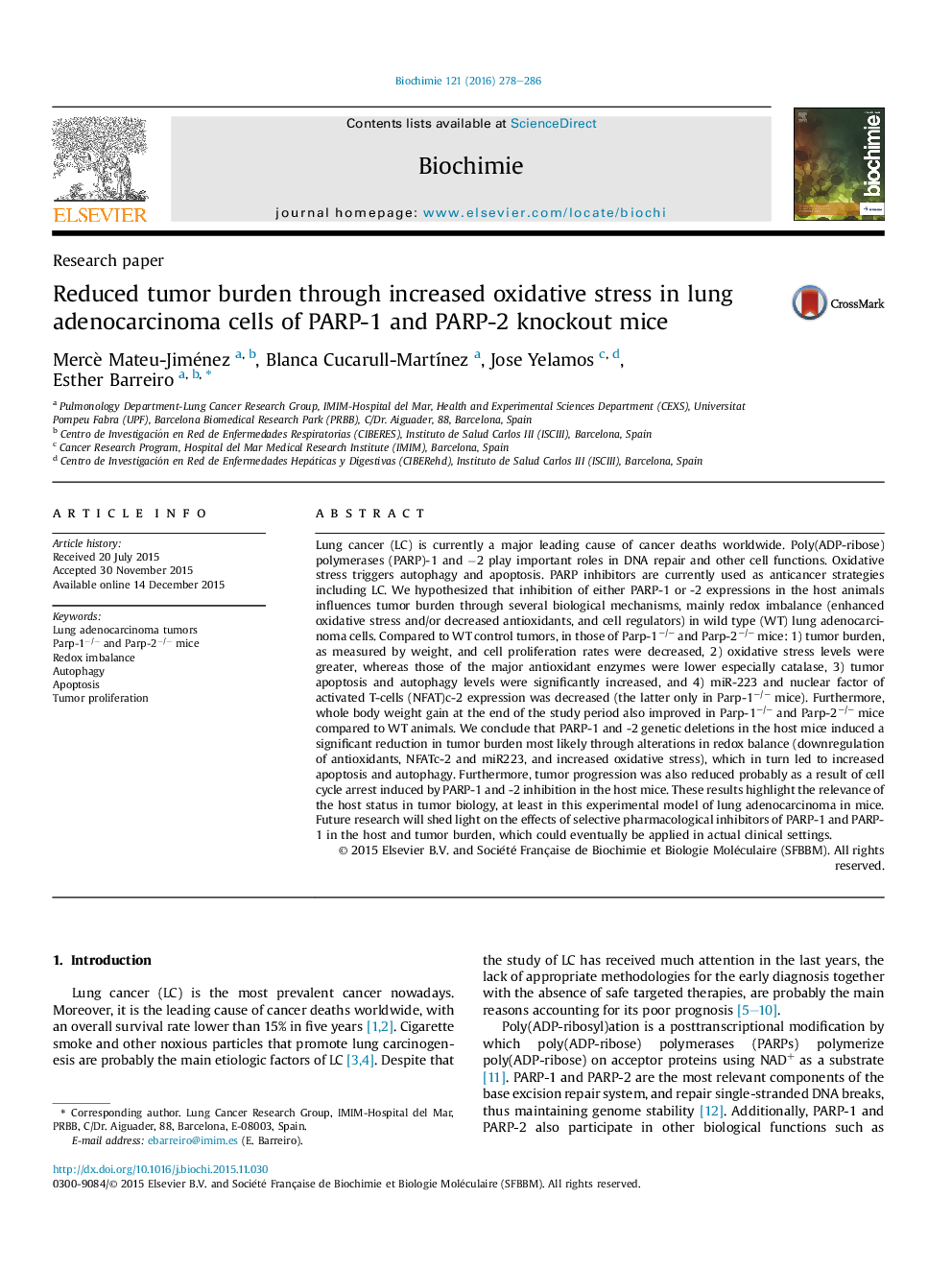| کد مقاله | کد نشریه | سال انتشار | مقاله انگلیسی | نسخه تمام متن |
|---|---|---|---|---|
| 1951933 | 1538410 | 2016 | 9 صفحه PDF | دانلود رایگان |

• Lung cancer (LC) is currently a major leading cause of cancer deaths worldwide.
• PARP-1 and -2 inhibitors are currently used as anticancer strategies including LC.
• Oxidative stress may trigger autophagy and apoptosis, and are cancer therapeutic targets.
• Oxidative stress, autophagy, and apoptosis greater while antioxidant lower.
• Tumor burden and progression were reduced in Parp-1−/− and Parp-2−/− mice.
Lung cancer (LC) is currently a major leading cause of cancer deaths worldwide. Poly(ADP-ribose) polymerases (PARP)-1 and −2 play important roles in DNA repair and other cell functions. Oxidative stress triggers autophagy and apoptosis. PARP inhibitors are currently used as anticancer strategies including LC. We hypothesized that inhibition of either PARP-1 or -2 expressions in the host animals influences tumor burden through several biological mechanisms, mainly redox imbalance (enhanced oxidative stress and/or decreased antioxidants, and cell regulators) in wild type (WT) lung adenocarcinoma cells. Compared to WT control tumors, in those of Parp-1−/− and Parp-2−/− mice: 1) tumor burden, as measured by weight, and cell proliferation rates were decreased, 2) oxidative stress levels were greater, whereas those of the major antioxidant enzymes were lower especially catalase, 3) tumor apoptosis and autophagy levels were significantly increased, and 4) miR-223 and nuclear factor of activated T-cells (NFAT)c-2 expression was decreased (the latter only in Parp-1−/− mice). Furthermore, whole body weight gain at the end of the study period also improved in Parp-1−/− and Parp-2−/− mice compared to WT animals. We conclude that PARP-1 and -2 genetic deletions in the host mice induced a significant reduction in tumor burden most likely through alterations in redox balance (downregulation of antioxidants, NFATc-2 and miR223, and increased oxidative stress), which in turn led to increased apoptosis and autophagy. Furthermore, tumor progression was also reduced probably as a result of cell cycle arrest induced by PARP-1 and -2 inhibition in the host mice. These results highlight the relevance of the host status in tumor biology, at least in this experimental model of lung adenocarcinoma in mice. Future research will shed light on the effects of selective pharmacological inhibitors of PARP-1 and PARP-1 in the host and tumor burden, which could eventually be applied in actual clinical settings.
Figure optionsDownload high-quality image (207 K)Download as PowerPoint slide
Journal: Biochimie - Volume 121, February 2016, Pages 278–286